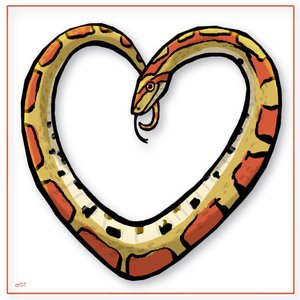Snakes are scary! Snakes are slithery! Snakes are slimy! And Snakes have only one aim in their life…To kill/eat as many human beings as possible. This is what people who are scared of snakes, or hate snakes, generally think. Did you ever think from other viewpoints? Did you think what a snake might be feeling? We as rescuers are fortunate enough to actually try and understand that point to some extent, owing to our close interaction with them. The following facts are observations gathered from thousands of rescues and millions of interactions that members of Friends of Snakes Society had.
- When we reach the location from where we receive a rescue call and locate the reptile, at least 75% of the times it is in hiding, in either a hole, rubble or under stones or may be even inside cracks and pipes. Out of the remaining 25% of the times when it is found in open ground, at least 24.90% of the times the snake is out in the open area unprotected because it is in a helpless situation, i.e., it either came out to bask in the sun to regulate its bodily functions, or it had a recent meal and is digesting the food, so it can’t move quickly. Tell me! Would you like to hurt someone who just had a meal and is in a helpless situation?
- Snakes often play ‘hide and seek’ with rescuers. When the snake is inside a hole, it really becomes a test of patience to rescue it. They are scared of threats and generally feel secure inside a hole temporarily, but they try to come out to finish their mission, hunting or basking, which is usually why they venture outside of their homes. However, they are scared of any potential threat and you can see that they put their head out and flicker their tongue to pick up scent. They constantly assess the surroundings and only come out when they feel absolutely safe. Even the slightest hand movement can send the snake back into the hole and it takes quite a while before the snake tries to venture outside again. We often end up donating blood to hungry mosquitoes by standing still during a night rescue, with a snake inside a hole.
- Upon seeing a human being approach it, we have never seen a snake try to attack us, unless if they have nowhere to go and are cornered. Given a chance the snake always tries to run away. ALWAYS! The reason, they are intimidated by a giant approaching them and are almost sure that it is not going to end well for them. They are surer of getting killed than we can ever be.
- And it is through this fear that we can say that snakes are more afraid of us than we are of them. The moment a rescuer catches a snake, almost 95% of the times the snake releases something called ‘musk’. Musk generally has a pungent smell and is used for multiple reasons like territory marking, deterring predators and threat, calling a mate, etc. In this case, the snake does so to deter its threat, a human being who has breached its comfort zone. It is not uncommon to see some of the snakes poop and pee in a rescuers hand. This has generally been observed in case of pythons. I bet you wouldn’t have thought that such a large snake, which is believed to be able to even swallow a human, would actually poop in fear of humans.
- Try waving a hand quickly in front of your face. You are bound to blink even when you know that you are going to do it. Now ask a friend to do the same, wave their hand suddenly in front of your face. This is true in case of any animal or reptile. Sudden unpredictable movements are often scary. Did you experience going to a new house with a guard dog shouting at you? How about when you had to go uninvited? May be when your cricket ball fell into their compound? That hostile environment with the angry uncle, grumpy aunt and a barking dog. Were you scared? Now think about what a snake would feel. It may be just lost its way, or came in search of food. Nobody paid it to kill you. There is simply no motivation for a snake to do that. You are neither its prey nor a threat (unless you corner it).
The next time you encounter a snake, try to think about what it might be thinking. Empathy and compassion will help us live together and balance the ecosystem. Respecting other creatures makes us respect life itself.
[ABTM id=21071]







